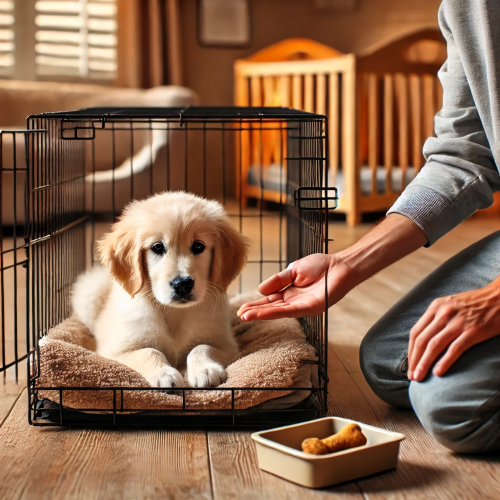Crate training is a powerful tool for puppy owners, offering a safe haven for your pup. Discover how to introduce the crate effectively and make it a place they love. With patience, crate training can ease housebreaking and reduce anxiety for both you and your furry friend.
Benefits of Crate Training
A crate mimics a den, providing security and comfort. It aids potty training by leveraging a puppy’s instinct not to soil their sleeping area and helps prevent destructive behavior when you can’t supervise. Starting early sets your puppy up for success.
Step 1: Choose the Right Crate
Select a crate big enough for your puppy to stand and turn in but not so large they can soil one end. Wire crates with dividers work well for growing pups. Add a comfy blanket or bed to make it inviting and cozy.
Step 2: Introduce Gradually
Place treats or toys inside and let your puppy explore without closing the door. Feed meals near the crate, then inside, to build positive associations. Keep initial sessions short and fun, letting them enter and exit freely at first.
Step 3: Close the Door
Once they’re comfortable, close the door for a few minutes while you’re nearby, praising them for staying calm. Gradually increase time spent inside, but never use the crate as punishment—it’s their safe space, not a jail.
Avoiding Mistakes
Don’t leave puppies under 6 months crated for more than 3-4 hours—they can’t hold their bladder longer. Watch for whining; it might mean they need a break. Adjust based on their comfort level to avoid stress or fear.
Tips for Success
Use a command like “crate” and reward entry with treats or praise. Keep the crate in a family area so they don’t feel isolated. At night, move it to your bedroom initially to reduce anxiety and help them settle.
Crate training takes time but builds a lifelong skill. A well-trained pup will see their crate as a home away from home. Explore more puppy training tips on our site to enhance your training journey!
